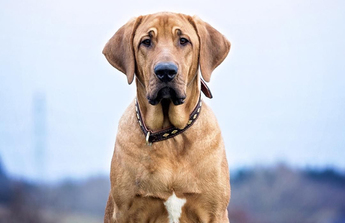The Swissy has a short, thick double coat that is easy to groom. Brush it weekly with a rubber curry brush or hound glove to remove dead hair and distribute skin oils to keep the coat gleaming.
This is basically a “wash and wear” breed, but they are double coated and do blow their undercoat, usually twice a year. When this is occurring they benefit from a goodbathand blow-out, followed by a thorough brushing with a rake orsheddingtool. For the rest of the year, the occasional bath and brushing usually do the trick.
The rest is basic care. Trim the nails as needed, usually every week or two. Brush the teeth frequently with a vet-approved pet toothpaste for good overall health and fresh breath.
Moderate exercise is needed, however, they do need to be taken on a daily, long walk, where the dog is made to heel beside or behind the person holding the lead, never in front, as instinct tells a dog the leader leads the way, and that leader needs to be the human.
A shorter walk in the morning would be fine, but a longer more interesting one in the afternoon is a must. These dogs also like to be able to roam around a back garden as often as possible so they can really let off steam. However, the fencing has to be extremely secure to keep these large dogs in because if they find a weakness in the fence, they will soon escape out and get into all sorts of trouble.
With this said, GSMD puppies should not be over exercised because their joints and bones are still growing. This includes not letting a dog jump up and down from furniture or going up or down the stairs. Too much pressure placed on their joints and spines at an early age could result in a dog developing serious problems later in their lives.
If you get a Greater Swiss Mountain puppy from a breeder, they would give you a feeding schedule and it's important to stick to the same routine, feeding the same puppy food to avoid any tummy upsets. You can change a puppy's diet, but this needs to be done very gradually always making sure they don't develop any digestive upsets and if they do, it's best to put them back on their original diet and to discuss things with the vet before attempting to change it again.
Older dogs are not known to be fussy or finicky eaters, but this does not mean you can feed them a lower quality diet. It's best to feed a mature dog twice a day, once in the morning and then again in the evening, making sure it's good quality food that meets all their nutritional requirements.
Learn about which human foods are safe for dogs, and which are not. Check with your vet if you have any concerns about your dog’s weight or diet. Clean, fresh water should be available at all times. Like many large breeds, Saint Bernard can experience bloat, a life-threatening condition where the stomach distends and twists. The causes of bloat aren’t fully understood, but experts agree that multiple, small meals per day and preventing vigorous exercise around mealtimes may help reduce the chances of it happening.
The average life span of the Greater Swiss Mountain Dog is 10 to 12 years. The Greater Swiss Mountain Dog is a large breed hence; hip dysplasia is a common problem. Although genetic, a dog’s environment can help to exacerbate a minor problem into a major one. Slick floors, rough play with an adult dog, too much exercise, jumping onto furniture or falls can cause problems. Other potential issues within the breed are Swissy Lick, Spleen Torsion, Cataracts, Epilepsy, and Entropion.
Greater Swiss Mountain Dogs are intelligent and headstrong, making them a bit difficult to train. Those who are experienced in training dogs often find the Swissy to be a great challenge. Although it is difficult, it is not impossible to train him. Very short sessions work best with this breed. Sessions should be repeated often. Rewarding the dog with a tasty tidbit will help keep him interested in training. It is important that you do not become frustrated. If you do, simply call off the lesson and start again later. Frustration is counterproductive to the training process.
It is not recommended to use any harness-type training device on this breed. They are a draft breed, and the use of a harness (other than for draft work) just tends to make them pull that much harder. As with all dogs, earlysocializationandpuppy training classes arerecommended.











